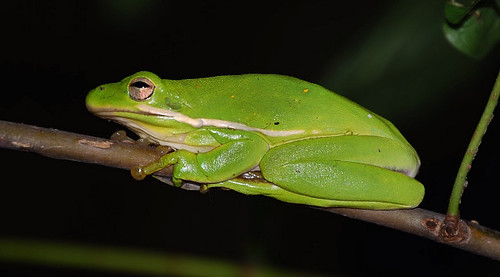The Georgia Aster (Symphyotrichum georgianum) is a state protected species of the Asteraceae family. This perrenial herb blooms beautiful purple heads during October and November. It is colonial, inhabiting dry habitats in portions of Georgia, Florida, Alabama, and the Carolinas. Most populations are confined to forest edges where the availability of light is not restricted by a closed canopy. A majority of the known remaining colonies are found along roadsides and utility swaths. It's ability to survive more recent disturbances is due to its relict adaptability to natural disturbed situations. This species was a colonist of the Post Oak savannah/prairie that existed throughout the southeast many centuries ago. In 2003, there were approximately 60 reported populations throughout the southeast. The majority of the known existing populations are small, consisting of 10-100 stems.
On October 31st, I accidentally stumbled upon a colony of Georgia Aster in Murray County, GA. This colony, like many others in the state was along a roadside. I visited the site over the next several days hoping to document the accurate size of the colony. Below are the notes from one trip:
11/04/10 - "I returned today to measure the size of the aster population. The area that is most concentrated with stems runs along the road for approximately 70'. It is 5-8' in width. These plants are atop a bank that is about 8' tall. There is a mow-line at about 4' up the bank, so no doubt some stems were lost when it was mowed recently. From the mow-line to the edge of the forest, there is about 5-8' of vegetation. Here there are several species growing, including the Aster patens. I counted the Aster georgianus until it got so thick that I had to estimate stems. From the west-end of the patch the clusters of stems were averaging 1-2' apart. This lasted for about 10' with an estimated 30 stems. Then the next 20' of the patch was thick with an estimated 300 stems. For the remaining 35' or so, the patch thins out and there is an estimated 180 stems spread throughout here. In all, I estimated just shy of 500 stems, at least 100 had bloomed heads, and there were at least 20 that had seeded heads only. Most of the seed capsules are still tight and have not spread."
"After this, I thought I'd better check along the road for more and found at least 16 other clusters over a quarter mile distance. This is just east of the original cluster. Most of these have just a few flower heads, but some have dozens. I'm estimating at least another one hundred flowering heads, and I know I didn't see all of them. I'm guessing that much has been destroyed by mowing, and there are many competitive plants choking some of it out. I could see a nice cluster about 50' off the road on private property. The woodland surrounding the site looks to have been clearcut within the last 10-15 years. This disturbance, no doubt has allowed the sun to aid in this population's spread. As forest succession continues, the aster population will began to shrink and become confined to the roadside once more."
This could possibly be one of the largest colonies of Georgia Aster in the state. It is located in the Brackett Ridges which are an extensive conglomeration of ridges in the southwest portion of Murray County. The elevation ranges approximately between 700' - 800'. The soils along these ridges are well-drained and perfect for plant communities that can not flourish in the lower floodplain forests. Historically, this area could have had sporadic clusters of Georgia Aster spread throughout these ridges. Maybe, there are some still there. I plan to make more survey trips in the upcoming fall to search for more Symphyotrichum georgianum.
For more information, see:
http://www.goldendelighthoney.com/tes/SYGE/asge_text.html
For more information, see:
http://www.goldendelighthoney.com/tes/SYGE/asge_text.html







No comments:
Post a Comment